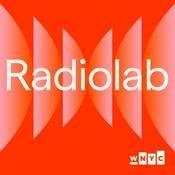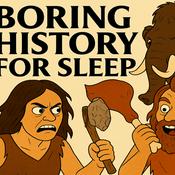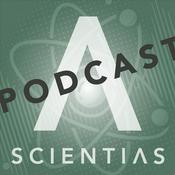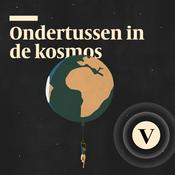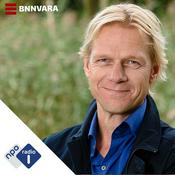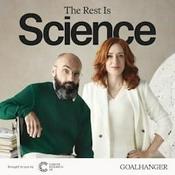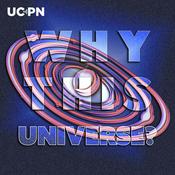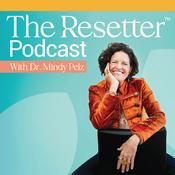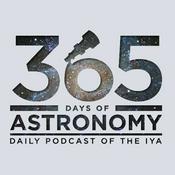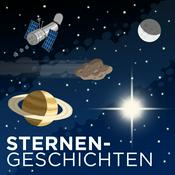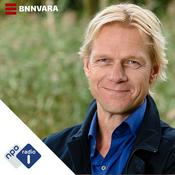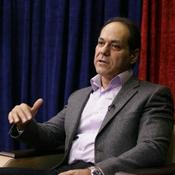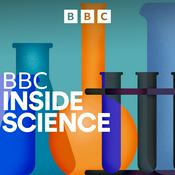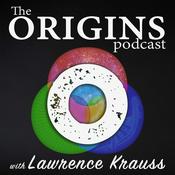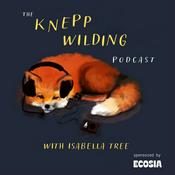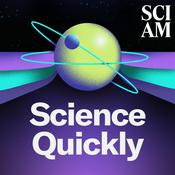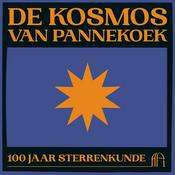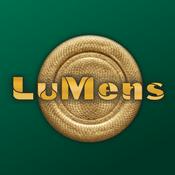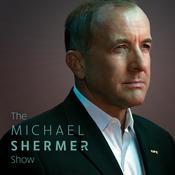Space Nuts: Astronomy Insights & Cosmic Discoveries
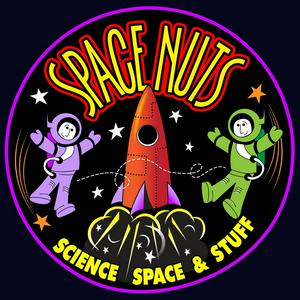
591 afleveringen

Gravitational Waves, Cosmic What-Ifs & Dark Energy Dilemmas
22-12-2025 | 21 Min.
This episode of Space Nuts is brought to you with the support of Antigravity A1. Experience the future of flight with the world’s first all-in-one 8K 360 drone. With intuitive controls and immersive goggles, the Antigravity A1 redefines what it means to fly. Check it out at AntigravityA1.Archived Insights: Gravitational Waves, Earth's Fate, and Dark EnergyIn this special episode of Space Nuts, hosts Andrew Dunkley and Professor Fred Watson take a trip down memory lane, revisiting some of the most compelling questions from their Q&A sessions. This episode features discussions on gravitational waves produced by the Big Bang, a thought-provoking "what if" scenario regarding the Earth's fate if the Sun never dies, and a deep dive into the enigmatic nature of dark energy.Episode Highlights:- Gravitational Waves and the Big Bang: Andrew and Fred tackle a listener's inquiry about whether the Big Bang generated gravitational waves and how these might be detected alongside the cosmic microwave background radiation.- The Fate of Earth: A "what if" question explores the implications of an immortal Sun and how Earth's environment might evolve, leading to fascinating speculations about tidal locking and atmospheric changes.- Time and Dark Energy: The hosts discuss a listener's theory proposing a connection between time and dark energy, addressing the complexities of cosmic expansion and the role of gravity in shaping our understanding of the universe.For more Space Nuts, including our continuously updating newsfeed and to listen to all our episodes, visit our website. Follow us on social media at SpaceNutsPod on Facebook, X, YouTube Music Music, Tumblr, Instagram, and TikTok. We love engaging with our community, so be sure to drop us a message or comment on your favorite platform.If you’d like to help support Space Nuts and join our growing family of insiders for commercial-free episodes and more, visit spacenutspodcast.com/about.Stay curious, keep looking up, and join us next time for more stellar insights and cosmic wonders. Until then, clear skies and happy stargazing.Become a supporter of this podcast: https://www.spreaker.com/podcast/space-nuts-astronomy-insights-cosmic-discoveries--2631155/support.

Snowball Earth, Dinosaur Asteroids & the Hubble Tension Unravelled
19-12-2025 | 35 Min.
This episode of Space Nuts is brought to you with the support of Antigravity A1. Experience the future of flight with the world’s first all-in-one 8K 360 drone. With intuitive controls and immersive goggles, the Antigravity A1 redefines what it means to fly. Check it out at AntigravityA1.Frozen Frontiers: Snowball Earth, Dinosaur Origins, and Hubble TensionIn this captivating holiday episode of Space Nuts, hosts Andrew Dunkley and Professor Fred Watson embark on a journey through time and space, discussing the intriguing concept of Snowball Earth, the origins of the dinosaur-killing asteroid, and the ongoing debate surrounding the Hubble tension in cosmology.Episode Highlights:- Snowball Earth: Andrew and Fred explore the fascinating theory of Snowball Earth, a period when our planet was completely frozen over, and how recent geological findings in Scotland and Australia shed light on this icy epoch.- Dinosaur-Killing Asteroid Origins: The hosts delve into the latest research pinpointing the Chicxulub impactor's origins within the asteroid belt, revealing the chemical markers that help trace its journey through the solar system.- The Hubble Tension: A discussion on the so-called crisis in cosmology, as the hosts dissect the differing measurements of the universe's expansion rate and how new data from the James Webb Space Telescope may provide clarity.- Listener Questions: The episode wraps up with engaging listener questions, including a fascinating inquiry about the impact of a frozen Earth on its diameter, prompting a thoughtful discussion on planetary changes over time.For more Space Nuts, including our continuously updating newsfeed and to listen to all our episodes, visit our website. Follow us on social media at SpaceNutsPod on Facebook, X, YouTube Music Music, Tumblr, Instagram, and TikTok. We love engaging with our community, so be sure to drop us a message or comment on your favorite platform.If you’d like to help support Space Nuts and join our growing family of insiders for commercial-free episodes and more, visit spacenutspodcast.com/about.Stay curious, keep looking up, and join us next time for more stellar insights and cosmic wonders. Until then, clear skies and happy stargazing.Become a supporter of this podcast: https://www.spreaker.com/podcast/space-nuts-astronomy-insights-cosmic-discoveries--2631155/support.

Time Dilation, Black Hole Mysteries & Cosmic Curiosities
15-12-2025 | 37 Min.
Sponsor Details:This episode of Space Nuts is brought to you with the support of Antigravity A1. Experience the future of flight with the world’s first all-in-one 8K 360 drone. With intuitive controls and immersive goggles, the Antigravity A1 redefines what it means to fly. Check it out at AntigravityA1.And NordVPN. Protect your online data with NordVPN. Get our special listener discounts and four months free with a 30-day money-back guarantee at www.nordvpn.com/spacenuts using the coupon code SPACENUTS at checkout.Cosmic Queries: Time Dilation, Black Holes, and GravastarsIn this thought-provoking Q&A edition of Space Nuts, hosts Andrew Dunkley and Professor Fred Watson tackle a range of intriguing questions from listeners around the globe. From the complexities of time dilation near supergiant stars to the mysteries surrounding black holes and the hypothetical concept of gravastars, this episode is a deep dive into the fabric of our universe.Episode Highlights:- Time Dilation Near Supergiants: Andrew and Fred discuss the effects of gravity on time near supergiant stars and whether significant time dilation occurs compared to black holes.- Black Holes and Stars: A listener inquires why black holes can’t revert to stars, prompting a fascinating exploration of singularity and the structure of stars.- Understanding Atoms and Black Holes: The hosts clarify the nature of atoms, free space, and how density calculations relate to black holes, addressing the paradox of infinite density.- Redshift Limits and Gravastars: The episode wraps up with an examination of redshift limits in the expanding universe and a discussion about the theoretical existence of gravastars, including their implications for our understanding of cosmic phenomena.For more Space Nuts, including our continuously updating newsfeed and to listen to all our episodes, visit our website. Follow us on social media at SpaceNutsPod on Facebook, X, YouTube Music Music, Tumblr, Instagram, and TikTok. We love engaging with our community, so be sure to drop us a message or comment on your favorite platform.If you’d like to help support Space Nuts and join our growing family of insiders for commercial-free episodes and more, visit spacenutspodcast.com/about.Stay curious, keep looking up, and join us next time for more stellar insights and cosmic wonders. Until then, clear skies and happy stargazing.Become a supporter of this podcast: https://www.spreaker.com/podcast/space-nuts-astronomy-insights-cosmic-discoveries--2631155/support.

Martian Timekeeping: Synchronizing Clocks, Eccentric Orbits & Space Gum Discoveries
12-12-2025 | 34 Min.
Sponsor Details:This episode of Space Nuts is brought to you with the support of Antigravity A1. The Antigravity A1 is the world’s first 8K 360 drone, it’s genuinely a game-changer. You get full immersive flight with the goggles, insanely intuitive controls, and endless creative freedom in editing.If you’re thinking about buying a drone, make it this one. Check out the link to learn more: AntigravityA1And NordVPN. To get our special Space Nuts listener discounts and four months free bonus, all with a 30-day money-back guarantee, simply visit www.nordvpn.com/spacenuts or use the coupon code SPACENUTS at checkout.Cosmic Conversations: Time on Mars, Eccentric Orbits, and Space GumIn this riveting episode of Space Nuts, hosts Andrew Dunkley and Professor Fred Watson embark on a fascinating journey through the cosmos, tackling the complexities of timekeeping on Mars, the peculiar orbit of exoplanet TOI 3884B, and a surprising discovery from asteroid Bennu.Episode Highlights:- Timekeeping on Mars: Andrew and Fred delve into the challenges of synchronizing time between Earth and Mars, highlighting the unique aspects of Martian days and the effects of relativity that complicate clock synchronization.- TOI 3884B's Eccentric Orbit: The hosts explore the unusual orbit of TOI 3884B, a planet that orbits its star at a significant angle, raising questions about its formation and the dynamics at play in its solar system.- Space Gum from Asteroid Bennu: A surprising find of nitrogen-rich polymeric sheets in the samples returned from asteroid Bennu leads to a discussion about the origins of this "space gum" and its implications for understanding asteroid composition and formation.- Curiosities and Speculations: The episode wraps up with playful banter about the implications of these discoveries and the mysteries that continue to unfold in our universe.For more Space Nuts, including our continuously updating newsfeed and to listen to all our episodes, visit our website. Follow us on social media at SpaceNutsPod on Facebook, X, YouTube Music Music, Tumblr, Instagram, and TikTok. We love engaging with our community, so be sure to drop us a message or comment on your favorite platform.If you’d like to help support Space Nuts and join our growing family of insiders for commercial-free episodes and more, visit spacenutspodcast.com/about.Stay curious, keep looking up, and join us next time for more stellar insights and cosmic wonders. Until then, clear skies and happy stargazing.Become a supporter of this podcast: https://www.spreaker.com/podcast/space-nuts-astronomy-insights-cosmic-discoveries--2631155/support.

Cosmic Questions: Time, Mass, and the Spectacle of Auroras
08-12-2025 | 36 Min.
Sponsor Details:This episode of Space Nuts is brought to you with the support of NordVPN. To get our special Space Nuts listener discounts and four months free bonus, all with a 30-day money-back guarantee, simply visit www.nordvpn.com/spacenuts or use the coupon code SPACENUTS at checkout.Cosmic Curiosities: Time Dilation, Supernova Remnants, and Aurora ColorsIn this engaging Q&A edition of Space Nuts, hosts Andrew Dunkley and Professor Fred Watson tackle a series of thought-provoking questions from their curious audience. From the enigmatic nature of time in anti-gravity fields to the vibrant colors of auroras, this episode dives deep into the mysteries of the cosmos.Episode Highlights:- Time in Anti-Gravity Fields: Andrew and Fred explore the implications of time dilation in gravitational and anti-gravity environments, discussing how time appears to flow differently depending on the observer's frame of reference.- Supernova Remnants: The hosts address whether we can still see the star remnants that contributed to the formation of heavy elements in our solar system, revealing the complexities of cosmic recycling.- The Colors of Aurora: Listener Nate's question about the stunning colors of auroras leads to a fascinating discussion on the atmospheric processes that create different hues, from greens to reds and beyond.- Relativistic Mass and Spacecraft Acceleration: Lee from Sweden poses an intriguing idea about using relativistic mass ejection to enhance spacecraft propulsion, prompting a conversation about the theoretical limits of current technology and the physics involved.For more Space Nuts, including our continuously updating newsfeed and to listen to all our episodes, visit our website. Follow us on social media at SpaceNutsPod on Facebook, X, YouTube Music Music, Tumblr, Instagram, and TikTok. We love engaging with our community, so be sure to drop us a message or comment on your favorite platform.If you’d like to help support Space Nuts and join our growing family of insiders for commercial-free episodes and more, visit spacenutspodcast.com/about.Stay curious, keep looking up, and join us next time for more stellar insights and cosmic wonders. Until then, clear skies and happy stargazing.Become a supporter of this podcast: https://www.spreaker.com/podcast/space-nuts-astronomy-insights-cosmic-discoveries--2631155/support.
Meer Wetenschap podcasts
Trending Wetenschap -podcasts
Over Space Nuts: Astronomy Insights & Cosmic Discoveries
Luister naar Space Nuts: Astronomy Insights & Cosmic Discoveries, NRC Onbehaarde Apen en vele andere podcasts van over de hele wereld met de radio.net-app

Ontvang de gratis radio.net app
- Zenders en podcasts om te bookmarken
- Streamen via Wi-Fi of Bluetooth
- Ondersteunt Carplay & Android Auto
- Veel andere app-functies
Ontvang de gratis radio.net app
- Zenders en podcasts om te bookmarken
- Streamen via Wi-Fi of Bluetooth
- Ondersteunt Carplay & Android Auto
- Veel andere app-functies


Space Nuts: Astronomy Insights & Cosmic Discoveries
download de app,
luisteren.


